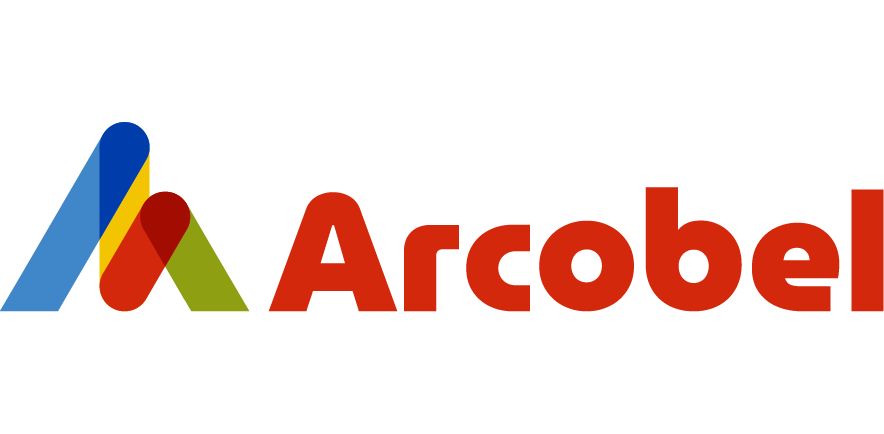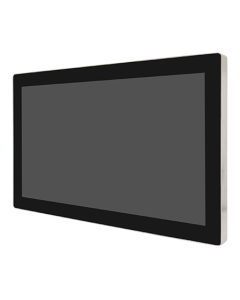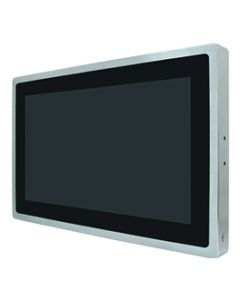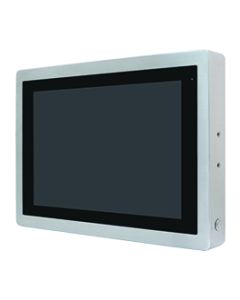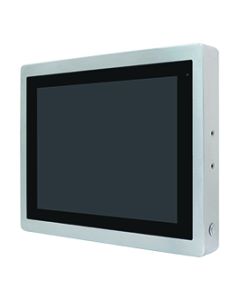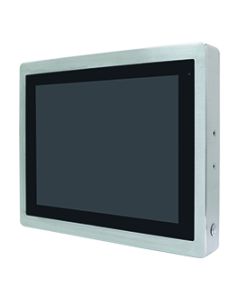

Capacitive vs. Resistive Touchscreen: Which is Best for Industrial Solutions?
On Arcobel.com, we offer a wide range of Panel PCs in different sizes, ranging from 10" to 24". These Panel PCs are available with or without a touchscreen. However, not all touchscreens are the same. There are two main touchscreen technologies: resistive touch and capacitive touch. The primary difference between both techniques lies in how the touch of fingers on the screen is registered.
What is a Resistive Touchscreen?
A resistive touchscreen consists of two layers. When a user presses the outer screen with, for example, their finger, these two layers come into contact with each other. This creates a contact moment, which has the same effect as a mouse click.
Advantages of Resistive Touchscreens:
Because the system works on pressure, touch can also be registered by a stylus or glove. The accuracy is very high and can be set precisely. Furthermore, a resistive touchscreen is resistant to dust and moisture, provided it has the correct seal, of course.
Disadvantages of Resistive Screens:
The disadvantages of resistive touch screens are their inability to support multi-touch gestures, poor visibility in direct sunlight, reduced brightness due to multiple layers, and reduced durability. The top layer on a resistive touch screen is made of soft, flexible material that can be damaged much more easily than glass.
What are Capacitive Touchscreens?
Capacitive touch screens are designed to detect the lightest touch of a finger; they work on the basis of the electrical field of human skin. As such, capacitive touch screens respond very quickly, as they do not require pressure to register a touch. Even the slightest touch activates the capacitive touch screen. The screen contains a conductive layer that detects changes in capacitance when a finger touches the screen.
Advantages of Capacitive Screens:
Capacitive touch screens can also register multi-touch gestures. Capacitive touch screens have a glass front panel, making them highly durable, easy to clean and scratch-resistant. They also offer high brightness.
Disadvantages of Capacitive Screens:
The disadvantages of capacitive touch screens mainly relate to accuracy. Most capacitive touch screens do not respond to objects other than human fingers (or special gloves) and therefore do not work with a stylus or thick gloves. Furthermore, these screens are less suitable for environments with dirt and dust or humid conditions.
When to Choose Which Screen for which environment?
Whether you should choose a capacitive or resistive screen depends on the application and working environment. It is advisable to choose a resistive touchscreen if you work with gloves, use the screen in a damp or dusty environment, and are looking for a cost-conscious solution where accurate input is more important than the user experience. However, if you want a modern, multi-touch interface, a capacitive screen is recommended. This screen is also recommended if brightness and ease of use are preferred, the screen must be able to withstand intensive use, and the touch control must feel intuitive.
Comparison resistive vs. capacitive touchscreen:
| Property | Resistive Touchscreen | Capacitive Touchscreen |
| Operating with gloves | Yes (even with gloves) | No (unless special gloves worn) |
| Multitouch support | No | Yes |
| Type of activation | Pressure when touched | Light touch |
| Screen brightness | Lower | Higher |
| Resistant to moisture/dust | Yes (with proper sealing) | Limited, unless modified |
| Reaction time | Average | Very fast and accurate |
| Durability | Limited (wearing top layer) | High |
| Costs | Lower purchase price | Higher purchase price |
| Accuracy | High, suitable for stylus use | Good, but less suitable for precise input |
| Applications | Industrial environments with gloves, moisture and dirt | Medical, cleanrooms, kiosks, high-end user interfaces |
Panel PCs with Touchscreen: Arcobel’s Solution
At Arcobel, we offer a wide range of industrial Panel PCs equipped with both resistive and capacitive touchscreens, depending on the application. Our solutions are designed for use in demanding industrial environments and offer:
• Robust enclosures (IP65/IP69K)
• Wide temperature range
• Mounting options for cabinet, wall or panel installation
• Long-term availability and lifecycle support
• Would you like to know more about our industrial Panel PC solutions?
Please view our current range or contact us for more information and tailored advice. Our specialists will be happy to assist you.
